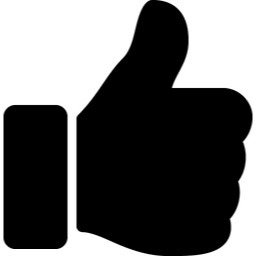-
Posts
1,620 -
Joined
-
Last visited
Content Type
News Articles
Tutorials
Forums
Downloads
Everything posted by mrwonko
-
You can write a better exporter.
-

Blender 3d GLM/GLA I/O plugin Assistance thread
mrwonko replied to FuzzyTosser's topic in Modding Assistance
That's a problem with the exporter and can't be fixed without fixing the plugin. -

re-texture-texture problem with .SKIN file
mrwonko replied to dark_apprentice's topic in Modding Assistance
Does the cape texture actually have an alpha channel with the deleted parts transparent? -
Yes, spawnflags 2, just as in SP, but only use that on low-poly models like terrains that need exact clipping since it will create a ton of brushes, one for each triangle.
-
The glm file is just the 3rd person version of the weapon, in first person the md3 models are used.
-
I create a brush, turn it into an entity via right click, then do that again? Cannot reproduce, old entity is deleted. I'm on 1.6.
-
What? I've never experienced empty func_groups... You can turn any brush entity back into worldspawn, it's called "Ungroup Entity" in the rightclick menu. func_group is treated just like normal brushes after compilation, so use as many as you like. The func_group should be used for anything you want to group; it's mostly there to let you select them all at once using alt+shift+left click.
-

How convert a Customizable skin into a single skin?
mrwonko replied to Arma3Adict's topic in Modding Assistance
Customizable skins just have lots of surfaces for each part, with most of them being turned *off in the .skin file. Find the head_*.skin, lower_*.skin and torso_*.skin of the version you want and combine them together in a single model_myskin.skin, create an icon_myskin.jpg for it and there you have it. (You can check the selected skins using some console command, it might've model.) Well, unless the model supports color customization, in that case you'll probably also need custom shaders or textures. -
No, since you need to define the inside/outside zones you'd have to add brushes, which is outside the scope of ent-modding. And thunder/lightning are not supported out of the box; you could create an effect and add that via ent-modding, but it probably wouldn't look all that pretty. If I were trying to create lightning I'd go for a sun-style white light that can be toggled on briefly, but that certainly requires a light compile. (In general you'd probably want to change the overall lighting if you want a nice dark thunderstorm.)
-
Is your radiant actually in "C:/Program Files/GtkRadiant-1.4/"? On an unrelated note, you may want to consider upgrading to 1.6.
-
I assume you're talking about blending between different textures as usually used in terrains. You either use vertex colors as alpha values for blending and set the vertex color using brushes as described here or you use an alphamapped terrain, which is typically created using EasyGen as described in this tutorial. (The easygen download link there is broken, try this one.)
-
Ah, I didn't know about this one. Thanks, I guess.
-
I can download every other file on jk3files (and I did), it's just these that for varying reasons fail. Thanks for the hint, I found 5 of the files. I'm adjusting the list.
-

Solid spawnflag on the MD3 mountain model - detail or structular?
mrwonko replied to Langerd's topic in Modding Assistance
You effectively get one detail brush per triangle of the model. Terrain models are just about the only thing that can reasonably use spawnflags 2. -
No. Then you might as well not make it Detail, but that would create an absurd amount of portals. You need to understand how Vis/BSP works in order to be able to properly understand what they do and how to use them.
-
anti-portal is for anti portals. caulk_acid/water/lava are for acid/water/lava. rainsurf is for rain surfaces. weatherzone is for weather zones. lightjunior is a junior light. Helpful so far? Anti portals are for blocking vis, it's basically the same as putting a caulk brush somewhere except it's not solid. Useful for Vis when working with detail brushes, e.g. inside terrains. The caulk variants are for the invisible sides of liquids, they have the proper volume properties set, but since they may differ in fog color I would recommend you write your own versions with correct fog color when using liquidsd. I'm just guessing with regards to rain surfaces, but I'd say it's for splash effects with weather effects in nonsolid places, e.g. on tree leaves that the player can fall through but that should still have nice splashes on them. Weather zones are also related to the weather system, they're used for the weather zone entities to mark areas of the map that use weather. Junior lights are not used for lightmap calculations, they just affect the light grid which is used for "dynamic" lighting. I don't know about terrain and the lightgrid shader.
-
Users have to install the Visual C++ Redistributable for the version you're using.
-
Rerun cmake.
-
Hi there, I'm having trouble downloading these files from jediknight3.filefront.com: Commando Academy (1) by Dominus_Scotus (commando_academy.zip)Grand Jedi Palace (1.0) by Shadowff61337 (grandjedipalace.zip)JKB Selkath (1.0) by AshuratheHedgehogDX (jkb_selkath_fixed.zip)Mandalorian Neo Crusader (1.0) by AshuratheHedgehogDX (neocrusaderashuradx.zip)Minecraft Playermodel v2 (2.0) by AshuratheHedgehogDX (minecraft_playermodelv2_fixed.zip)duel_fcaarena (RELOADED v.1.1) by Xtremezeero (duel_fcaarena1.zip)jk2maps for multiplayer (1.0) by DarthAnakin (single_player_maps_for_jk2_multiplayer.zip)Kejim Audio Piece by LucasArts Entertainment (kejim.mp3)Jedi Master Tunic Luke Skywalker by MegaKyle (jedi_tunic_luke.zip)Lurtz (1.0) by AshuratheHedgehogDX (lurtzv1_ashuradx.zip)Tatooine SithStalker (1.0) by Lizfizz (sith_stalker_sp.zip)Ultimate Outcast (1.0) by GreentechB (ultimate_outcast_gtb.zip)University of Mysteries by Namezzis (24university.zip)The Unknown Room FINAL (1.1) by Lord Revian (unknown_room_final.zip)-%5BCF%5D-Daskane by TPKVrok (cfdaskane.zip)Galak Fayar to Admiral Thrawn conversion mod 1.0 + Galak mech reskin 1.0 (1.0) by Battle111 (galakthrawn_and_galak_mech_reskin.zip)Expedition (1.05) by Acrobatc101 (expedition_1.05_jk2.zip)GoldenEye Bunker (1.1) by OmegaSigma (25goldeneye_bunker.zip)Hologram Rroom by cloudflint (hologram_room.zip)JAWA (Jedi) NPC (FINAL) by Lord Revian (jawa_jedi_npc.zip)Movie Battles II: Dark Duel Prefabs (1.0) by Lord Revian (mb2_duel_tfu_incomplete.zip)Maulkiller and Savage Opress by Illidan Kazama (mk_so_v1.rar)Quinlan-Vos Pack (1.0) by Savatron (quinlanvos_pack_1.0.rar)Reactor Room 2 (2.0) by The Dark Wii Player (reactor_room_2.zip)Republic Commando by Rebas14 (republic_commando.zip)Sion NPC by Lord Revian (sion_sith_npc.zip)Stormtroopers with Stronghold Character Sounds by Ty294 (stronghold.zip)Last Knights of the Force - Academy (1.0) by Sheik95 (lkfacademy.zip)worldwarOverhaul (1.4) by Ben Aerens (47worldwaroverhaul.zip)Skippin_Desann by Skippin (skippin_skin_official.rar)The Bridge At Khazad-Dûm by Apophis (bridge_of_khazad-d�m_.zip)Yep, another Reborn Skin (2.0) by Guaseth (guaseth.zip)ÐescendingÆngel by ÐescendingÆngel (�escending�ngel.zip)Do any of you have any of these?
-
You selected the Jedi Academy folder during installation, not the GameData folder, so it's looking for stuff in Jedi Academy/base (when using the base mod). You can either manually edit the configuration files to fix the broken paths or reinstall the radiants.
-
Which version are you using?
-
It's just a matter of scaling, yes. Just adhere to the grid you want to place them in - at least whole units for the dimensions, or possibly multiples of 8 or 16 or whatever suits you.
-
the whole file is loaded and kept in memoryeach file is only loaded onceIt may be marginally faster, but it probably makes no difference practically.Probably nothing to worry about, unless you use dozens of textures at 2k+ resolution.
-
There's nothing you can do. Ideally the exporter would split seams automatically and keep the proper normals so it looks smooth, but since it requires a cut the only way it will ever look smooth is if it is flat.



